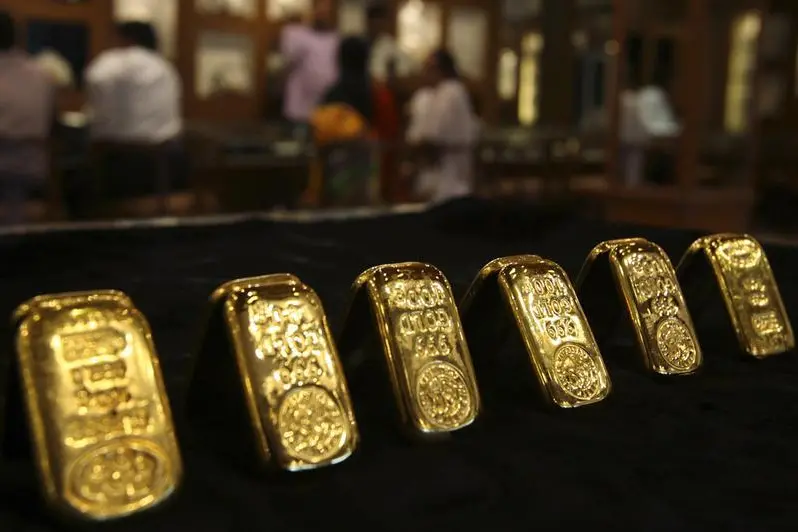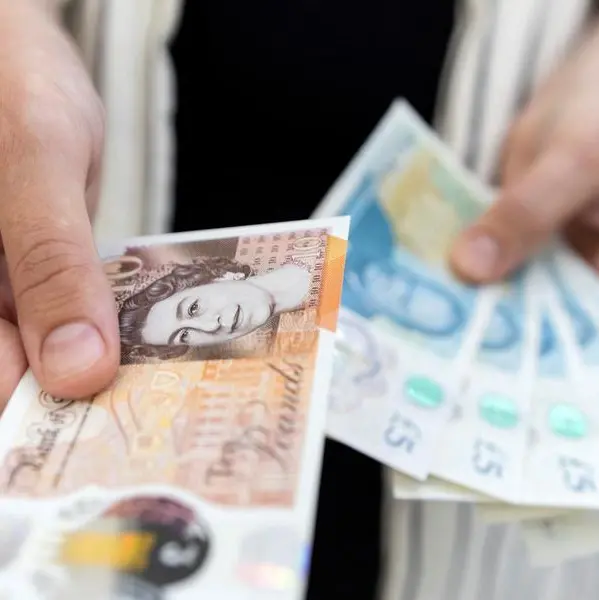PHOTO
LONDON- Gold edged higher on Monday as the dollar fell, but gains were muted as financial markets bet that air strikes on Syria would not escalate into a wider conflict.
Prices have trended sideways since January, buoyed by geopolitical worries but capped by expectations for further U.S. interest rate hikes and strong technical resistance at $1,360-$1,365 an ounce - their January, February and April highs.
Spot gold was at $1,346.91 an ounce at 1335 GMT, up 0.1 percent, while U.S. gold futures were 0.2 percent higher at $1,350.10 an ounce.
Forces from the United States, Britain and France targeted Syria with air strikes on Saturday, hitting what they said were three of its main chemical weapons facilities.
Gold prices reached an early high of $1,348.69 on the back of the news, but struggled to maintain those gains on expectations the attacks would not mark the start of greater Western involvement in the conflict.
"Some of the risk (premium) has come down following the air strikes," Capital Economics analyst Simona Gambarini said. "Some market participants were thinking that maybe there could be an escalation of the tensions, but that has not happened and therefore prices have come down a bit."
"If you consider that the Fed is tightening we should see lower gold prices. Instead, they have been moving sideways," she said. "There is certainly some risk premium incorporated into prices ... but there is no trigger for higher prices at the moment."
Supporting gold in the near term, the dollar sank 0.5 percent against the euro, reaching its lows for the day as Wall Street stocks opened higher.
Speculators raised their net long positions in COMEX gold contracts by 363 contracts to 138,212 contracts in the week to April 10, U.S. Commodity Futures Trading Commission (CFTC) data showed on Friday.
Dealers trimmed their short positions in silver by 3,187 contracts to 36,417 contracts, the CFTC data showed.
Silver was up 0.6 percent at $16.72 an ounce, while platinum XPT= was 0.3 percent higher at $929.80 an ounce.
Palladium was 1.8 percent higher at $1,005.30 an ounce, off an earlier near seven-week high of $1,007.70.
Prices rose 9.6 percent last week, their biggest weekly gain in more than a year, as concerns that supply from number one producer Russia could be disrupted by U.S. sanctions fed into a strong technical rebound following the metal's 20 percent fall from its January record high.
"More than two-fifths (of) global supply originates from Russia, and while Norilsk Nickel, the world's largest palladium producer, has not been subject to sanctions, unsettled traders have loaded up on the metal," SP Angel said in a note.
(Reporting by Jan Harvey; Additional reporting by Swati Verma in Bengaluru; Editing by Mark Heinrich and Alexander Smith) ((jan.harvey@thomsonreuters.com; +44 0 207 542 7744; Reuters Messaging: jan.harvey.thomsonreuters.com@reuters.net; Twitter: http://twitter.com/JanHarvey121))












